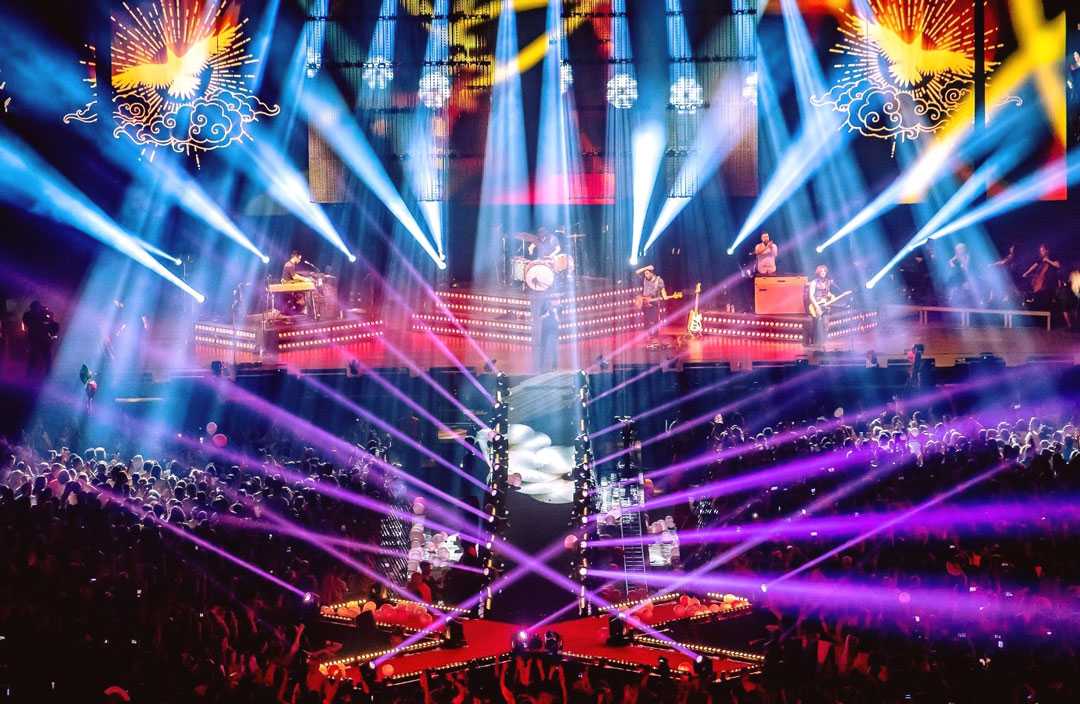Chamsys powers Manuel Carrasco tour
- Details

The 68,000-seat stadium serves as the home to Atlético Madrid, but on Saturday 29 June, it played host to another of Spain’s national treasures when it welcomed singer Manuel Carrasco who appeared there as part of his 35-date The Cross of the Map tour. Fans who packed the stadium were immersed not only in the emotional power of the star’s vocals, but also by the sweeping visuals that Jvan Morandi ran from a control centre powered by six ChamSys desks including two MagicQ MQ 500 Stadiums, two MagicQ MQ100s, and two MagicQ MQ80s.
With its large 350sq.m LED video wall spanning beyond the width of the bi-level stage, and its 400 lighting fixtures creating colourful matrixes of richly saturated colours, the 36-universe show enveloped the big stadium in a transcendent panorama.
Evoking a sense of intimacy between fans and the chart-topping star, Morandi’s design along with the video content created by Jonathan Klahr, Andrew Morgan, Tom Hadley, Roof Studios, Stylorouge Studios and Karlos Sans, supported his client’s well-known pop ballads with softly sweet visuals. At the same time, the show also veered off into harder rock directions that were never seen before in Carrasco’s tours for his seven previous albums.
Helping Morandi weave this intricate light and video tapestry together were his ChamSys consoles. He used his two MagicQ MQ500 Stadiums to run most of the lighting, video, camera switching and lasers; and two MQ100 Consoles to control audience lighting, while having his two MQ80 Consoles take care of the DMX automatic track that moved the LED screens on the horizontal axis.
With the exception of some audience lighting, the entire show at Madrid was cue stacked. Morandi wrote 38 pages of cues, working with Reaper Software, Capture visualizations and some WYSIWYG with “great help” from Joeri Diddens, who also provided FOH support. All systems were run in ArtNet and Acn.
“ChamSys saved a great deal of time in creating this show by simplifying things,” explains Morandi. “We timecoded a very large number of cues, around 1600. So, the timecode read via import CSV files feature in ChamSys was a godsend. The consoles’ timecode functionalities, network capabilities, and the ability to handle a large number of ArtNet universes have all been very important to me on this tour.”
(Jim Evans)


















